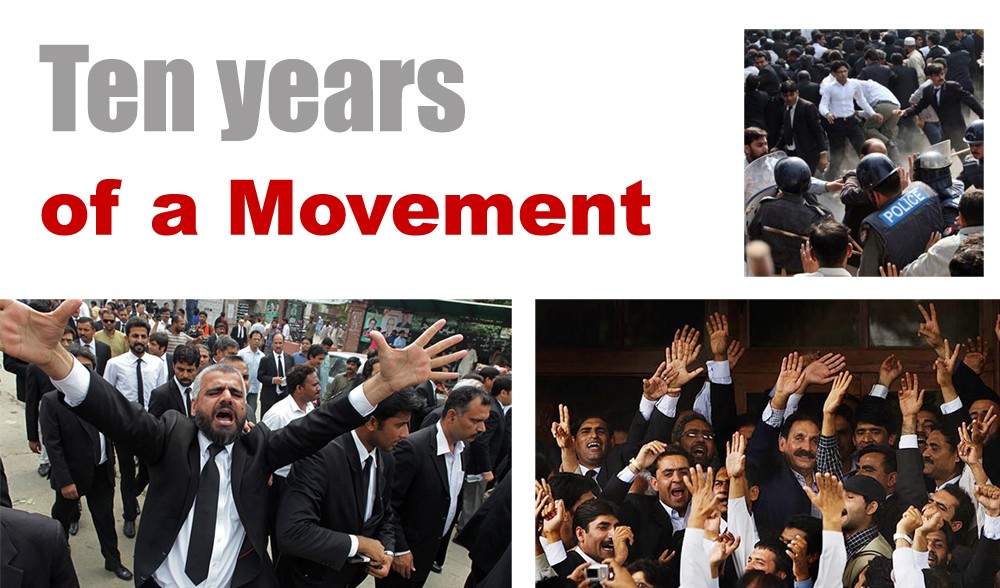
Looking back at what started the Lawyers’ Movement ten years ago and what impact did it have on the bar and the bench

March 9, 2007 it was and the rest as they say is history. It’s been exactly ten years since the beginning of a Lawyers’ Movement launched against the attempted forceful removal of the country’s chief justice. The country meanwhile has seen a lot, and the movement, what catalysed it and the fallout has all been analysed at great length.
What use it is to regurgitate all that has been said before is therefore a legitimate question. Just the fact that an important event of our history is crossing the 10 year milestone is perhaps not the only reason why we at The News on Sunday want to remember it. We feel it’s an important period (these ten years) that is not static but is evolutionary in scope and therefore merits a critical backward glance. It contains important lessons particularly with reference to constitutionalism and democracy in this country that need to be discussed once again.
The last time the Lawyers’ Movement was recalled was at the time of the retirement of the restored chief justice Iftikhar Chaudhry. The subsequent chief justices of the apex court have followed their own mind not just in running the court but also in shaping a jurisprudence which does not replicate the Chaudhry court, especially in the exercise of suo motu powers.
But there were certain institutional outcomes that have had an impact on the structure of judiciary, the conduct of the bar as well as the society at large. The process of judicial appointments and removal that was negotiated out of the Eighteenth Amendment precludes any accountability or checks and balances of the institution and concentrates huge powers in the person of the chief justice.
Read also: Ten years of a Movement
A Supreme Court beholden to the lawyers for its independent existence could not maintain the necessary distance between the bench and the bar, leading to an impression of a shady collusion between the two and letting loose a class of unruly lawyers for whom rule of law was an alien concept.
The much needed reforms in the lower courts remain far from realised as the higher courts remain busy settling frivolous litigation which does not even fall under their purview. Of late, it appears, the judiciary is once again assuming a greater role for itself, as the saviours of the people against the ‘corrupt’, inefficient and ‘ineffective’ executive. This is happening as access to justice remains far from the common people.
Ten years after the Lawyers’ Movement provide us an opportunity to discuss all this in a Special Report.